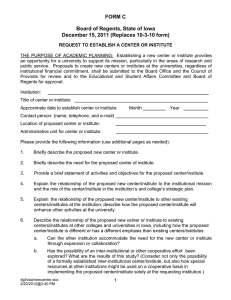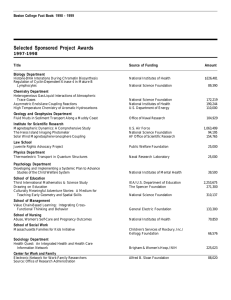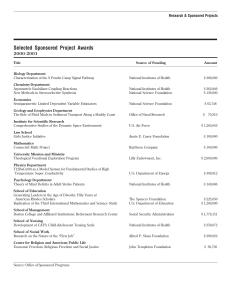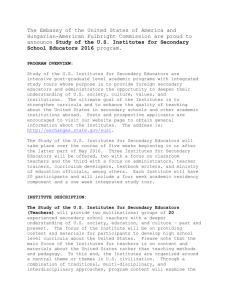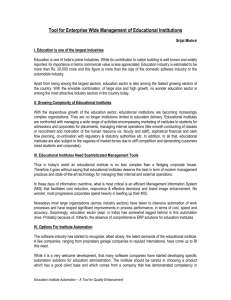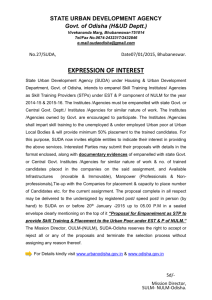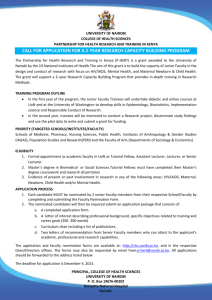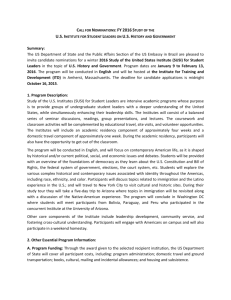New Centers and Institutes - The Texas A&M University System
advertisement
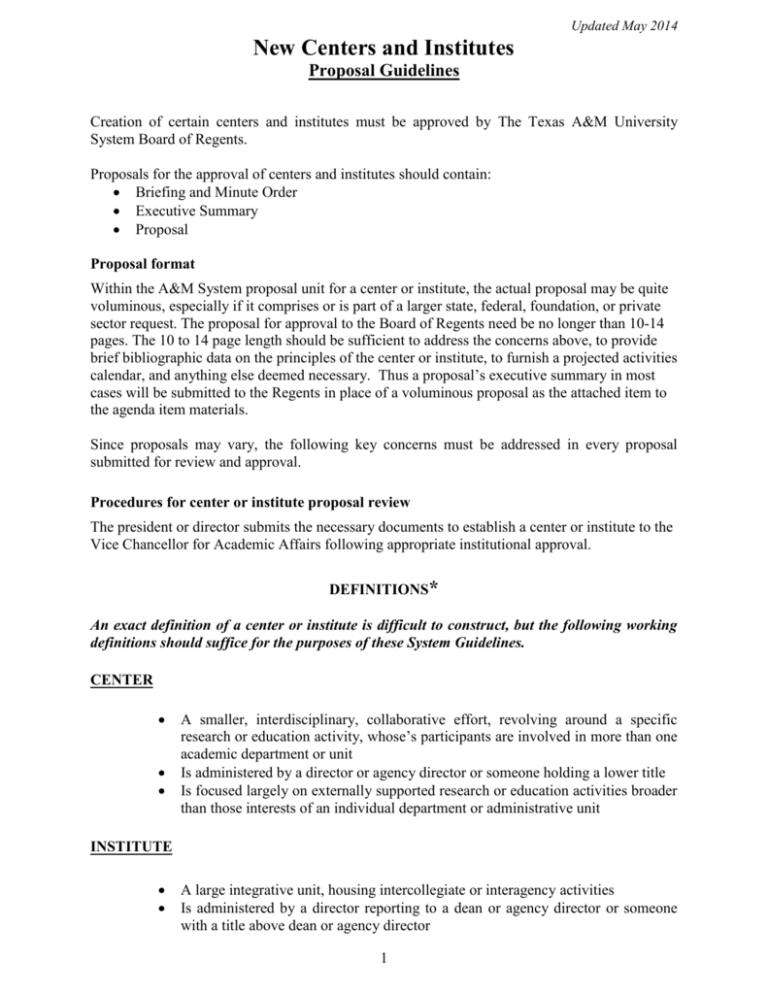
Updated May 2014 New Centers and Institutes Proposal Guidelines Creation of certain centers and institutes must be approved by The Texas A&M University System Board of Regents. Proposals for the approval of centers and institutes should contain: Briefing and Minute Order Executive Summary Proposal Proposal format Within the A&M System proposal unit for a center or institute, the actual proposal may be quite voluminous, especially if it comprises or is part of a larger state, federal, foundation, or private sector request. The proposal for approval to the Board of Regents need be no longer than 10-14 pages. The 10 to 14 page length should be sufficient to address the concerns above, to provide brief bibliographic data on the principles of the center or institute, to furnish a projected activities calendar, and anything else deemed necessary. Thus a proposal’s executive summary in most cases will be submitted to the Regents in place of a voluminous proposal as the attached item to the agenda item materials. Since proposals may vary, the following key concerns must be addressed in every proposal submitted for review and approval. Procedures for center or institute proposal review The president or director submits the necessary documents to establish a center or institute to the Vice Chancellor for Academic Affairs following appropriate institutional approval. DEFINITIONS* An exact definition of a center or institute is difficult to construct, but the following working definitions should suffice for the purposes of these System Guidelines. CENTER A smaller, interdisciplinary, collaborative effort, revolving around a specific research or education activity, whose’s participants are involved in more than one academic department or unit Is administered by a director or agency director or someone holding a lower title Is focused largely on externally supported research or education activities broader than those interests of an individual department or administrative unit INSTITUTE A large integrative unit, housing intercollegiate or interagency activities Is administered by a director reporting to a dean or agency director or someone with a title above dean or agency director 1 Updated May 2014 New Centers and Institutes Proposal Guidelines Is focused largely on externally supported research or educational activities that are much broader than those interests of a given college or administrative unit PROGRAMS, LABORATORIES, FACULTIES & FACILITIES Are lesser administrative, educational or research entities, usually residing within an academic department or unit. Require no approval by the Board of Regents. *Note: These definitions and guidelines do not apply to administrative centers (e.g., counseling centers, computer centers), training centers within agencies, or to small agency or departmental research or teaching centers serving as the focal point of narrow disciplinary activity. 2 Updated May 2014 New Centers and Institutes Proposal Guidelines The Development of the Proposal for new Centers/Institutes 1. Rationale for the creation of the center or institute Identify the current problems or issues that will be addressed by the center or institute’s activities and justification for the establishment of the center or institute to address these problems or issues. The basic concern would be "What merits the creation of a center or institute, as opposed to encompassing its proposed activities within existing or less formal structures?" Interdisciplinary, per se, will not suffice. There must be compelling reasons which may include regional or national need, currency of the research or educational activities, broad enrichment of education and training, research frontiers only accessible by wide collaborations, etc. 2. General description of the center or institute and its mission and goals. Include Identifiers: The proposed name of the center/institute The responsible administrative unit Member university(ies), agency(ies) and/or health science center 3. Potential faculty associated with the center or institute and potential intrasystem and other collaborations. Provide a list of potential faculty who will be associated with the center or institute and include a one page biographical sketch on the associated faculty with proposal. Actual or potential intrasystem collaborations should be highlighted where applicable. 4. Potential activities In addition to research collaboration, what other activities does the center or institute plan to conduct? These may include newsletters, workshops, for fee services, training classes, etc. 5. Impact on education and training of students A center or institute should encompass the education and training of graduate students and the enrichment of the vistas of undergraduate students wherever feasible and consistent with the mission of the sponsoring university or agency. Educational or service benefits to the citizenry of the region, state or country should be emphasized, where appropriate. International impact or potential benefit should be mentioned as well. 6. Resource requirements What additional resources will be required beyond the current level of personnel, equipment and facilities? Provide an estimated cost for new resources. 3 Updated May 2014 New Centers and Institutes Proposal Guidelines 7. Sources and future expectations of financial support A center or institute might receive some minor administrative fiscal support, and possibly some initial start-up funding, but it is expected to be largely supported by external funds. Therefore, previous sources of support, as well as projected future sources and their level, must be well documented and justify the creation of the center or institute. (Note: An exception to solely external funding would be where a funding agency requires some level of matching funds in a proposal. This requirement should be argued case by case.) Some flexibility in the external funding requirement may be acceptable in the case of centers and institutes in areas where sources are limited, such as in the arts or humanities. Nevertheless, the spirit of the requirement should be honored and the level of internal support be specified. 8. Governance and advisory structure At a minimum, a center or institute should have a designated director reporting to a designated academic or administrative officer of the sponsoring university or agency. There should be no ambiguity of reporting lines. An executive or steering committee, comprised of university or agency faculty or staff with some coming possibly from outside the center or institute structure, is strongly recommended, and it should meet regularly. An organizational chart is always informative. 9. Mechanisms for periodic review The norm should be that centers and institutes have a finite life, and consequently, periodic reviews should be undertaken at least every three years. A review committee is needed to accomplish this task, and it should be formed of some, if not all, outsiders. The review committee’s members’ nature of appointment and length of terms should be provided as well. The executive or steering committee or a subset of it, embellished by some outside members could serve this role. The range and charge of the review committee should be specified. An example would be, "Can the review committee recommend the discontinuation of the center or institute?" Its reporting line should be designated, and its charge should include measuring the effectiveness of the center or institute and how it fits into the mission of the sponsoring entity. 4
